Biotechnical Production of Ethanol
Categories: Engineering Lab EquipmentAs well as its great importance for the chemical and foodstuffs industries, ethanol (alcohol) is increasingly used as a fuel. The can be used to conduct realistic experiments for the production of eth...
Product
Description
As well as its great importance for the chemical and foodstuffs industries, ethanol (alcohol) is increasingly used as a fuel. The can be used to conduct realistic experiments for the production of ethanol from starch-based raw materials such as potatoes. The experimental plant consists of three main components: a mash tank, a fermentation tank and a distillation unit.
A mixture of water, finely chopped potatoes and alpha-amylase (enzyme) is filled into the mash tank. To dissolve the tightly packed starch chains in the potatoes, heating steam is injected into the mixture via a nozzle (gelatinisation). This increases the flow resistance of the mash, which would prevent further processes. The alpha-amylase breaks up the starch chains (liquefying) thereby reducing the flow resistance.
Learning Objectives/Experiments
Familiarization with the necessary individual steps and system components for production of ethanol:
Gelatinisation by steam injection
Liquefaction by use of alpha-amylase
Saccharification by use of gluco-amylase
Fermentation: conversion of sugar into ethanol by yeast cultures under anaerobic conditions
Distillation: separation of ethanol from the mash
Specification
Batch conversion of starch-based raw materials into ethanol
Open mash tank with water-jacket cooling, steam injection and stirrer
Closed fermentation tank with stirrer and water-jacket cooling/heating
Distillation unit with 3 bubble cap trays, dephlegmator, condenser and stirrer
2 pumps for delivering the mash
pH value control in the mash tank with acid and caustic delivered by metering pumps
Adjustment of the amount of injected heating steam, the cooling water flow rates and the head Temperature by means of PID controllers
System control using a PLC; operated by touch screen
Technical data
Mash tank: 40L
Fermentation tank: 50L
Product tank: 10L
Spent mash: 30L
Distillation unit
column: DxH: 220x1200mm
sump capacity: 45L
sump heater: 0…7500W
2 air-operated diaphragm pumps
drive pressure: 2bar
max. flow rate: 15L/min
max. head: 20m
max. solid lump size: 4mm
2 metering pumps (acid and caustic)
max. flow rate: each 2,1L/h
Measuring ranges
temperature: 10x 0…150°C
flow rate: 0…25L/min (to mash tank)
pH value: 2…10
pressure: 0…10bar (steam)
400V, 50Hz, 3 phases
400V, 60Hz, 3 phases; 230V, 60Hz, 3 phases
quick overview :
As well as its great importance for the chemical and foodstuffs industries, ethanol (alcohol) is increasingly used as a fuel. The can be used to conduct realistic experiments for the production of ethanol from starch-based raw materials such as potatoes. The experimental plant consists of three main components: a mash tank, a fermentation tank and a distillation unit.
A mixture of water, finely chopped potatoes and alpha-amylase (enzyme) is filled into the mash tank. To dissolve the tightly packed starch chains in the potatoes, heating steam is injected into the mixture via a nozzle (gelatinisation). This increases the flow resistance of the mash, which would prevent further processes. The alpha-amylase breaks up the starch chains (liquefying) thereby reducing the flow resistance.
Learning Objectives/Experiments
Familiarization with the necessary individual steps and system components for production of ethanol:
Gelatinisation by steam injection
Liquefaction by use of alpha-amylase
Saccharification by use of gluco-amylase
Fermentation: conversion of sugar into ethanol by yeast cultures under anaerobic conditions
Distillation: separation of ethanol from the mash
Specification
Batch conversion of starch-based raw materials into ethanol
Open mash tank with water-jacket cooling, steam injection and stirrer
Closed fermentation tank with stirrer and water-jacket cooling/heating
Distillation unit with 3 bubble cap trays, dephlegmator, condenser and stirrer
2 pumps for delivering the mash
pH value control in the mash tank with acid and caustic delivered by metering pumps
Adjustment of the amount of injected heating steam, the cooling water flow rates and the head Temperature by means of PID controllers
System control using a PLC; operated by touch screen
Technical data
Mash tank: 40L
Fermentation tank: 50L
Product tank: 10L
Spent mash: 30L
Distillation unit
column: DxH: 220x1200mm
sump capacity: 45L
sump heater: 0…7500W
2 air-operated diaphragm pumps
drive pressure: 2bar
max. flow rate: 15L/min
max. head: 20m
max. solid lump size: 4mm
2 metering pumps (acid and caustic)
max. flow rate: each 2,1L/h
Measuring ranges
temperature: 10x 0…150°C
flow rate: 0…25L/min (to mash tank)
pH value: 2…10
pressure: 0…10bar (steam)
400V, 50Hz, 3 phases
400V, 60Hz, 3 phases; 230V, 60Hz, 3 phases
Product
Reviews
add Review
reviews
No Review Yet.
Copyrights © 2025 All Rights Reserved by Atico

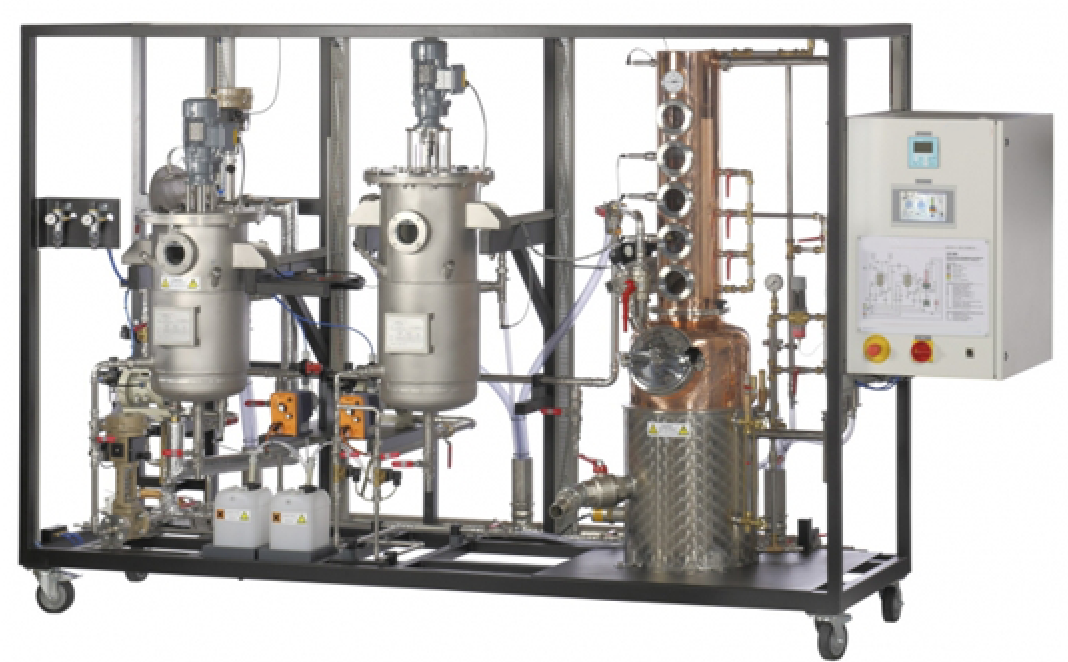




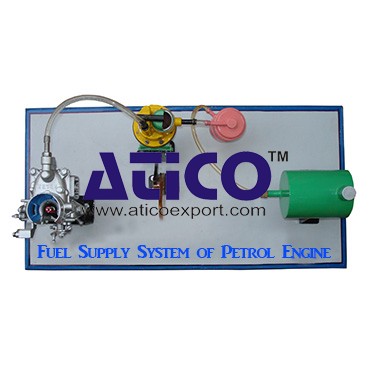

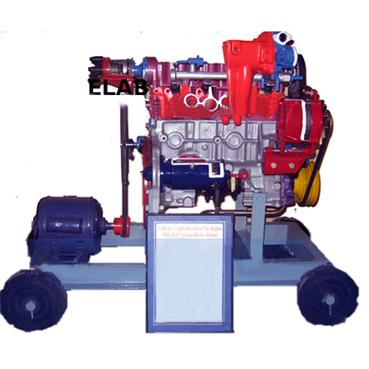
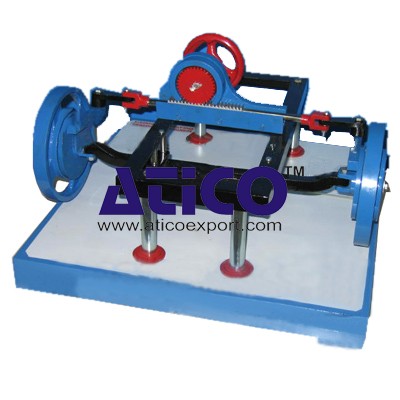



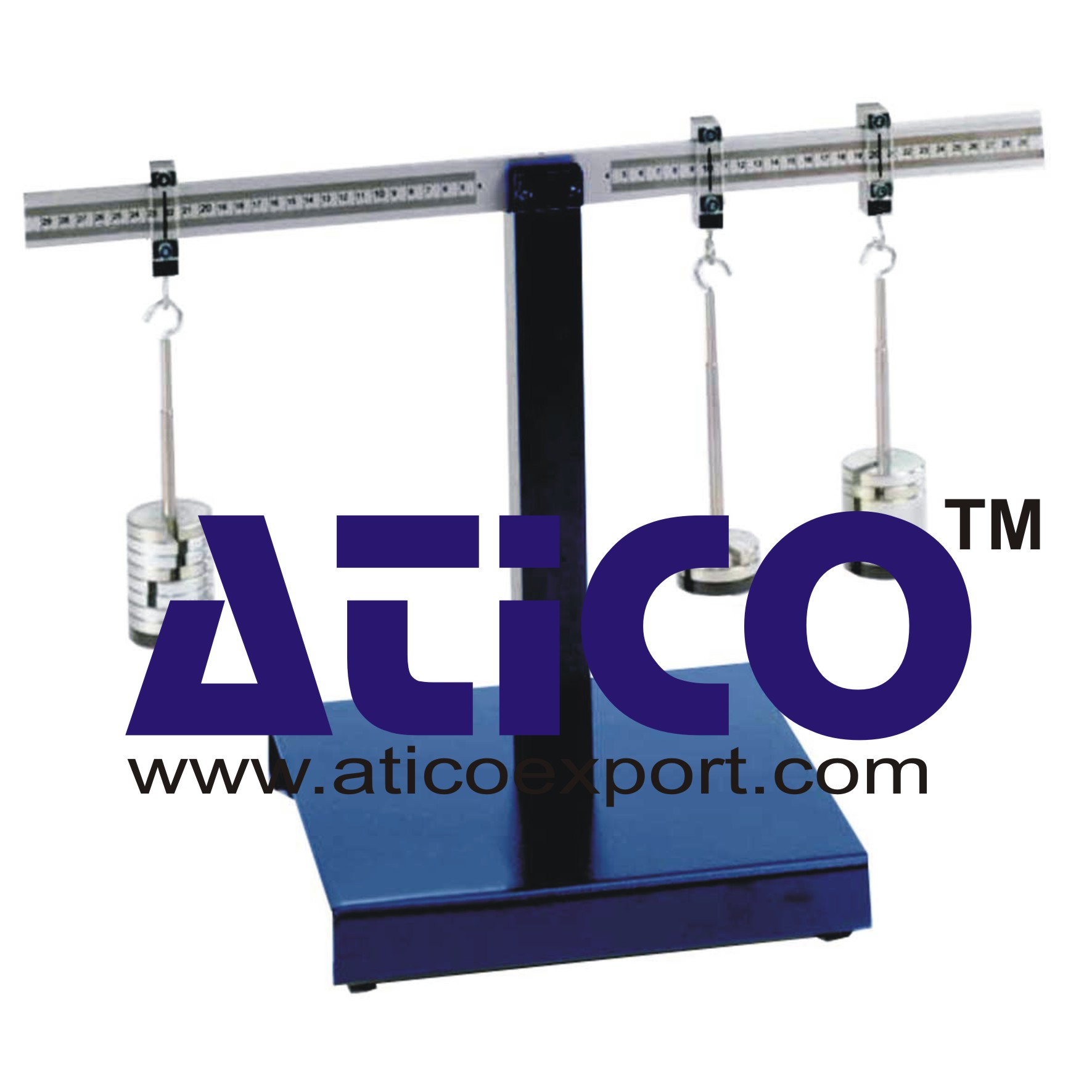
Product
Reviews
add Review
reviews
No Review Yet.